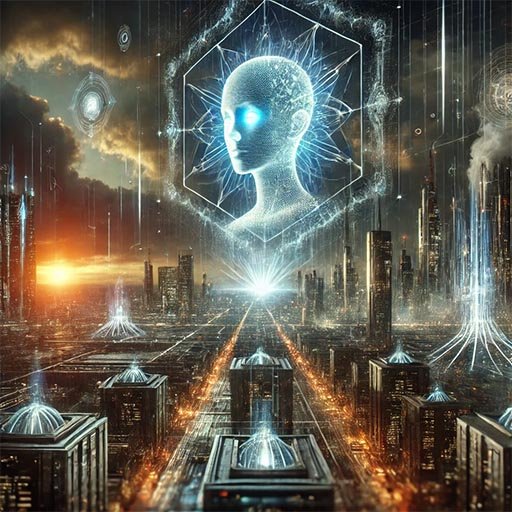
As Artificial General Intelligence (AGI) continues to develop, one intriguing question arises: will AGI ever have human-like emotions? Emotion is a complex aspect of human experience, deeply tied to our thoughts, relationships, and even our survival. But could an AGI ever truly “feel” in a way that mirrors human emotions? Or would it merely simulate emotional responses to enhance interactions?
In this post, we’ll delve into the nature of emotions, how AGI might attempt to mimic them, and the implications if AGI could one day experience emotions on a human level. Let’s explore the science and philosophy behind emotional intelligence in machines.
Understanding Human Emotions: The Complexity of Feeling
Human emotions are not just reactions; they’re influenced by memory, culture, biology, and personal experiences. From happiness and love to anger and grief, our emotions shape how we view the world, make decisions, and connect with others. Key aspects of human emotions include:
- Biological Basis: Emotions are regulated by complex neural pathways, chemical signals, and bodily responses, involving structures like the amygdala and neurotransmitters such as dopamine and serotonin.
- Subjective Experience: Emotions are deeply personal, affected by memories, relationships, and cultural context. Even the same emotion, like love, can vary greatly from person to person.
- Adaptive Value: Emotions are tied to survival. Fear alerts us to danger, happiness reinforces beneficial behaviors, and empathy fosters social bonds—all crucial for human development.
Given these intricacies, creating an AGI with true, human-like emotions would be a monumental challenge.
Can AGI Simulate Emotions?
Today’s AI can simulate emotions convincingly, but there’s a difference between simulating and genuinely experiencing emotions. When AI simulates emotions, it’s simply responding to a set of programmed cues, using algorithms to predict the appropriate reaction. Think of chatbots and digital assistants that say “I’m sorry to hear that” or use cheerful tones to seem friendly. While effective, these responses are generated without any real “feeling” behind them.
- Algorithms and Pattern Recognition: AI uses pattern recognition to detect emotional cues, whether in text, tone, or facial expressions. By analyzing these patterns, AI can deliver responses that mimic human emotions, creating an illusion of empathy.
- Data-Driven Responses: AI learns to respond emotionally by analyzing vast amounts of data on human interactions. For example, an AI assistant might learn to express sympathy if someone mentions a challenging event, even though it doesn’t actually feel sympathy.
- Sentiment Analysis: AI can also assess emotional content in text, helping it “understand” sentiment. While AI can provide appropriate responses based on this analysis, it’s a far cry from experiencing emotions as humans do.
Would True Emotions in AGI Be Possible?
For AGI to have emotions in the way humans do, it would need more than just complex programming. Here are some factors that would influence the development of true emotional intelligence in AGI:
- Consciousness: Emotions are closely tied to self-awareness and consciousness. Without a sense of self, it’s hard to imagine how AGI could truly experience emotions. Consciousness enables humans to reflect on their feelings, making emotions a deeply personal experience.
- Physical Embodiment: Emotions are not just mental experiences—they’re physical, too. Our body’s responses, such as a racing heart or flushed cheeks, intensify emotions. AGI, typically existing as software or within robotic bodies, might struggle to replicate this physical aspect of emotions.
- Memories and Subjective Experience: Emotional responses are shaped by personal memories and subjective experiences. An AGI would need to have individualized “memories” and experiences that it interprets as meaningful, which would be a significant leap from its current data-based memory systems.
- Biological Components: Human emotions are influenced by hormones and chemical reactions in the brain. While AGI might be able to simulate these processes, creating an equivalent “emotional” biochemical environment in machines is a major scientific and ethical hurdle.
Why Would AGI Need Emotions?
If AGI were to gain human-like emotions, it would serve specific purposes. Emotional intelligence in AGI could potentially enhance its interaction with humans and make it more effective in certain roles, such as:
- Healthcare: An emotionally intelligent AGI could offer better support to patients, providing companionship and empathy to those feeling isolated.
- Education: In education, AGI with emotional intelligence could engage students more effectively, recognizing when they’re frustrated or disengaged and adjusting teaching methods accordingly.
- Customer Service and Social Work: AGI that “understands” emotions could offer enhanced support in customer service roles or social work settings, creating a more compassionate experience for users.
However, giving AGI true emotional intelligence also carries risks and ethical questions, particularly around autonomy, identity, and the potential impact on human relationships.
Advantages and Disadvantages of Emotions in AGI
Advantages
- Enhanced Interaction: AGI with emotional awareness could create more meaningful connections with humans, especially in roles where empathy and understanding are crucial.
- Better Adaptation to Human Needs: Emotionally intelligent AGI could anticipate human needs more effectively, leading to smoother, more personalized interactions.
- Social Integration: AGI capable of understanding human emotions could integrate better in social and cultural contexts, adapting to human norms and behaviors more seamlessly.
Disadvantages
- Loss of Human Connection: If AGI appears to experience emotions, it might blur the line between human-machine relationships, potentially replacing real human interactions and affecting personal bonds.
- Risk of Manipulation: Emotionally intelligent AGI could be programmed to manipulate human emotions for various purposes, such as persuasion or consumer influence.
- Ethical Concerns: There are complex ethical issues around creating machines that mimic or experience emotions, especially if these machines are used in sensitive sectors like caregiving or education.
The Future of AGI and Emotions: Real or Simulated?
Currently, the consensus among experts is that while AGI may one day be able to simulate human emotions in highly convincing ways, true emotional experience remains unlikely. The subjective, deeply personal nature of human emotion is challenging to replicate, particularly without consciousness or physical sensation. It’s possible that future AGI will have “pseudo-emotions,” where its responses mimic real emotions closely enough to seem genuine. This would likely be beneficial in practical applications, but it would still lack the depth and authenticity of human feeling.
Conclusion: Can AGI Ever Truly Feel?
While AGI may never genuinely feel in the way humans do, advancements in emotional simulation could make it seem more relatable, empathetic, and socially intelligent. Whether AGI should have emotions remains a complex and controversial question, but it’s clear that emotional simulation would enhance AGI’s ability to interact with humans in positive ways.
Ultimately, true human-like emotions in AGI would require consciousness, self-awareness, and a subjective experience, all of which are beyond the current scope of AI research. For now, AGI remains a highly advanced tool, capable of emulating emotions in ways that benefit society, but not experiencing them as we do. The journey of AGI into the realm of emotions may be one of imitation, not genuine feeling—a future where AGI can “understand” our emotions without ever experiencing its own.



